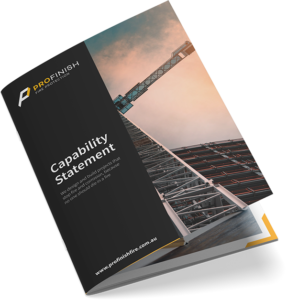Thin-film intumescent paint/coatings are often used for passive fire protection because of their high standards of finish, quality, reliability and varying options of fire resistance. However, intumescent coatings are also a preferred product because of its ability to be applied offsite prior to steel installation.
In this blog, we cover the differences between the onsite and offsite application of intumescent paint to structural steel and what you need to know to facilitate offsite application in your project.
Onsite Application
Onsite application of intumescent coatings is often the default choice of many architects and contract managers who fail to consider alternative options. Unlike vermiculite, onsite application of intumescent is not always straightforward for a number of reasons.
Preparation, Layers and Drying Times
Depending on the fire-resistant level (FRL) required, onsite application of intumescent paint can take between 4 to 7 days. This estimate considers the time to mask up and encapsulate the local environment, apply the required thickness of paint, allow for drying time in between layers as well as site cleanup. The application consists of one or multiple layers of primer, multiple layers of base coat, and a topcoat – with the number of layers required depending on the FRL indicated for the steel member. For many of the products on the market, it is best practice to apply up to a maximum of 1500 microns per day, with a 24hr drying period required for each layer.
Weather Dependency
The application of intumescent requires a completely dry environment, an ambient air temperature of 10-35 degrees and humidity levels lower than 80%. The forecast of rain or dew during scheduled application can delay the project, and it is not uncommon for an application to be delayed for several weeks, especially in the wetter autumn and winter seasons.
Impact on Construction
The onsite application area(s) need to be prepared before spraying can begin, which involves masking to protect the surroundings from overspray. Dust from other site work increases the risk of inter-coat contamination so other works may need to be limited during the application. In addition to this, to comply with Occupational Health and Safety requirements, other trades must vacate the site during the application of intumescent due to the presence of volatile organic compounds (VOCs) in intumescent paints.
Advantages and Disadvantages of Onsite Application
Intumescent coatings are often specified to be applied onsite after the steel has been erected.
The advantages of an onsite application are:
- No transport or handling damage
- No additional transport costs after fabrication
The disadvantages of onsite application to be considered are:
- Potential uncontrollable delays due to weather
- Disruption to other site works
- Potential inter-contamination (site dust etc.)
- Slower overall construction (considering min. one week application)
- OHS risk
- Potential for overspray damage or timely encapsulation required
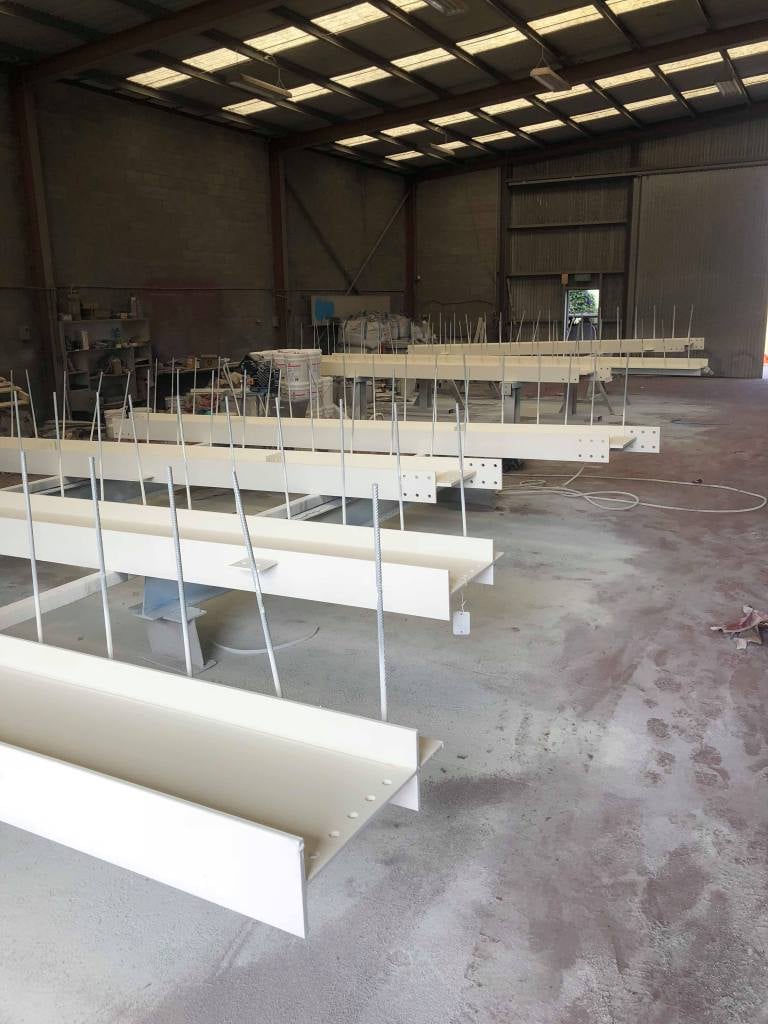
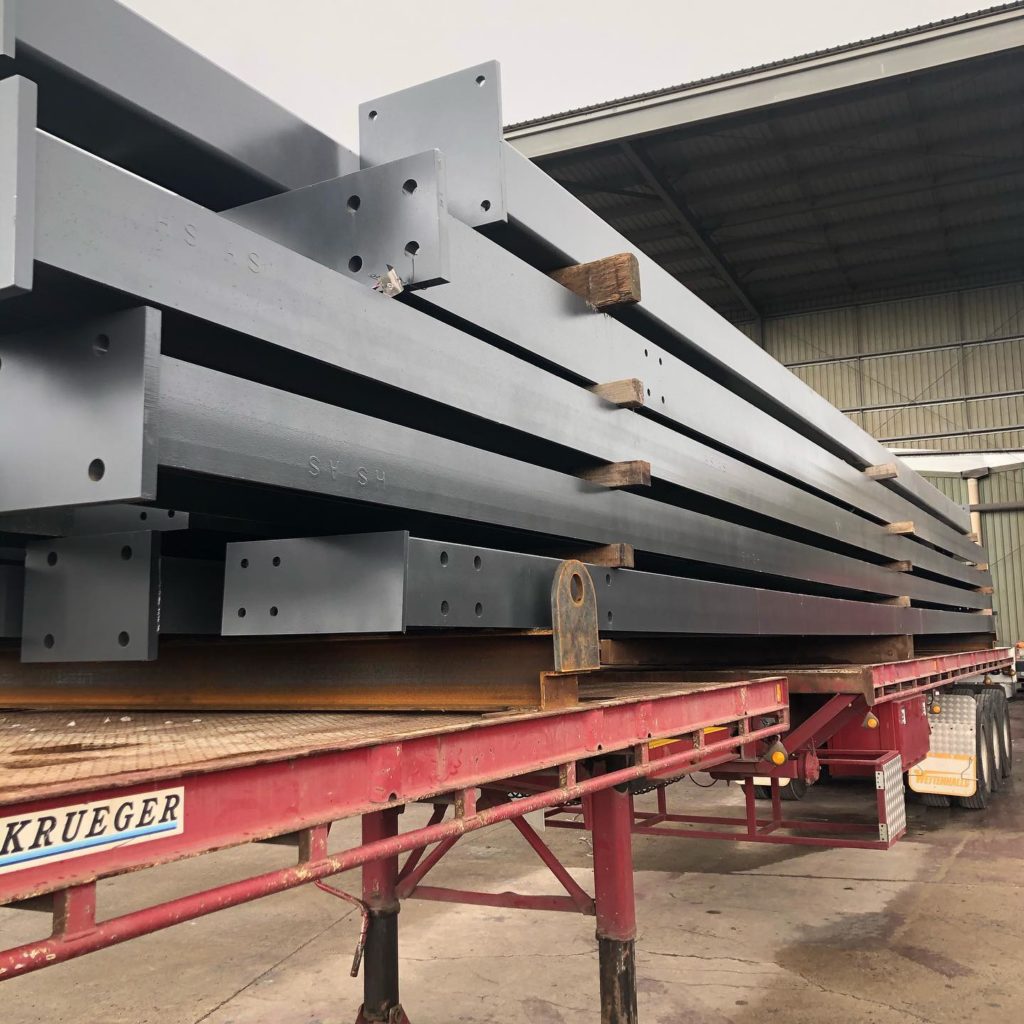
Offsite Application
The application of intumescent offsite is rising in popularity as contract and project managers learn more about the benefits and how easily it can be scheduled into a construction projects plan.
Streamlined Construction
Before being delivered to site, the structural steel is sent directly from the steel fabricator to the factory of the fire protection solutions provider where the coatings are applied. Often the main concern is damage during transport from the factory to site. Using slings instead of chains when moving the steel reduces the risk of damage, but if damage does occur the fire protection team can touch up these areas onsite by filling any indentation and applying a topcoat with a brush (so no lengthy setup or messy cleanup required!).
Quality Control
Application of intumescent is completed in a double-walled factory where the environment can be better controlled (so there will be no weather delays!). This environment ensures quality application with no risk of inter-coat contamination which can impact the quality of the coatings. In a controlled environment, the drying time may be accelerated. Without the potential of application delays, the steel is delivered to the project site on-time and construction can continue on schedule.
Reduced Overall Project Costs
Comparing quotes of intumescent to other passive fire protection solutions can sometimes look black and white, but it’s not always that simple. Quotes for fire protection take into account the application of the product, not the costs that are accrued onsite for delaying trades due to access requirements, weather disruptions or cleanup times. It’s important to consider the impact that offsite application, and the decreased need for more people and materials onsite, has on overall construction efficiency.
Advantages and Disadvantages of Offsite Application
The advantages of the offsite application are:
- Streamlined project management
- Better quality control
- No disruptions to the site
- No risk to area/site due to overspray
- Reduced OHS risks due to VOC’s
- Reduced potential for delays
- Reduced waste increases the sites Green Star Efficiency rating
The disadvantages of offsite application to consider are:
- Possibility of damage during transport
- If damage occurs, an applicator must have access to the site to touch up
- Potential of higher transport costs (Note: PROFINISH includes transportation in quotes)
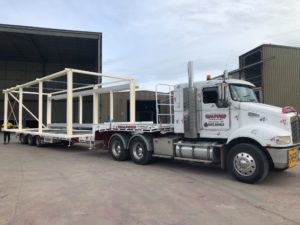
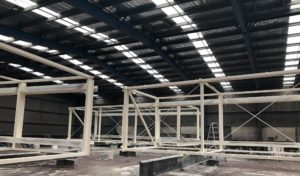
How to decide
Consider these qualifying questions to help assist you in whether to apply intumescent coating onsite or offsite:
- What is the time pressure? An onsite application can take up to two weeks and needs at least 7 days of clear and dry weather.
- What month is it? The months April through to September pose the highest chance of wet weather and therefore risk application delays.
- Is the steel already installed? If the steel has already been installed, there is no choice. You will need to apply fire protection onsite.
- The Fire Resistance Level (FRL) required? The FRL will determine how many microns need to be applied to the steel and therefore impact the onsite application duration.
- Where is it being applied? In tall constructions, the higher the building level is, the bigger the impact of weather. With increased wind and potentially more contaminants, quality control and ambient conditions will be a factor.
Conclusion
Increasingly we find clients opting for offsite applications where issues such as schedules, site access, Occupational Health & Safety or weather dependency are important, but the decision is based on many factors surrounding the project. The expert team at PROFINISH Fire Protection have an intimate knowledge of fire protection products and can assist you in deciding whether to apply coatings on or offsite. The team can provide you with competitive quotes, helpful information and back it all up with exceptional service.
Get in touch by phone (03) 5274 1226, email estimating@profinishcoatings.com.au or use the form below.

